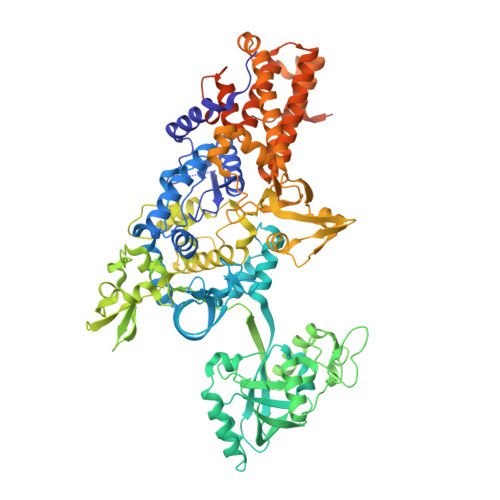Structural and Mechanistic Basis of Pre- and Posttransfer Editing by Leucyl-tRNA Synthetase
Lincecum, T., Tukalo, M., Yaremchuk, A., Mursinna, R., Williams, A., Sproat, B., Van Den Eynde, W., Link, A., Van Calenbergh, S., Grotli, M., Martinis, S., Cusack, S.(2003) Mol Cell 11: 951
- PubMed: 12718881
- DOI: https://doi.org/10.1016/s1097-2765(03)00098-4
- Primary Citation of Related Structures:
1OBC, 1OBH - PubMed Abstract:
The aminoacyl-tRNA synthetases link tRNAs with their cognate amino acid. In some cases, their fidelity relies on hydrolytic editing that destroys incorrectly activated amino acids or mischarged tRNAs. We present structures of leucyl-tRNA synthetase complexed with analogs of the distinct pre- and posttransfer editing substrates. The editing active site binds the two different substrates using a single amino acid discriminatory pocket while preserving the same mode of adenine recognition. This suggests a similar mechanism of hydrolysis for both editing substrates that depends on a key, completely conserved aspartic acid, which interacts with the alpha-amino group of the noncognate amino acid and positions both substrates for hydrolysis. Our results demonstrate the economy by which a single active site accommodates two distinct substrates in a proofreading process critical to the fidelity of protein synthesis.
- Department of Biology and Biochemistry, University of Houston, Texas 77204, USA.
Organizational Affiliation:





















